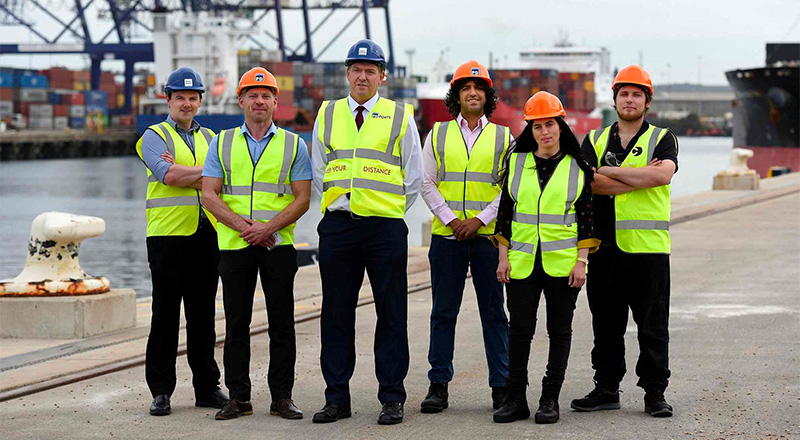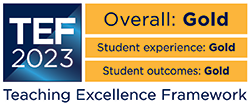Ground-breaking research to improve port’s energy usage
A ground-breaking project has won funding to explore how a North-East port operator can use the latest digital technology to more effectively manage its power consumption.

The £285,420 collaborative research project, Vertically Integrated Cloud-Based Ports, will be delivered by partners PD Ports at Teesport, Teesside University, lead partner GE and Connected Places Catapult.
It has received a grant of more than £213,000 from the Clean Maritime Demonstration Competition, funded by the Department for Transport and delivered in partnership with Innovate UK, to investigate the use of a cloud-based, integrated digital solution for energy management for use at ports.
The project aims to demonstrate how the use of an intelligent energy network can not only reduce costs at the port, but also help lower emissions.
It will investigate how ports can be fully electrified and use a cloud-based industrial microgrid that simultaneously reduces costs and emissions, thereby reducing the impact of the ports and shipping sector on the environment.
The innovative proposal will combine the use of smart microgrid technology with a higher-level cloud-based services platform that allows third party integration and add-on services.
The first part of the project will involve building an emulated port platform that will be used to measure the environmental impact and business and environmental benefits of both short-term and long-term port operational scenarios.
Professor Michael Short, academic lead for the Centre for Sustainable Engineering and Principal Investigator for Teesside University on the project, said: “This is great news for the University and the region.
“As an institution we are committed to sustainability and the Net Zero agenda, and this is reflected within our research focus and innovation work.
“I am delighted to be collaborating with GE, our local port and Connected Places Catapult to apply my research on smart energy systems and informatics to support the decarbonisation of the maritime sector.”
PD Ports’ Engineering Director, Maurice Brooksbank said: “Here at PD Ports, decarbonisation is at the forefront of our existing and future strategy, and as a business we are committed to reaching net zero across our Tees-based operations by 2027. “We’re delighted to have formed a partnership with Teesside University and other like-minded organisations to discover how we can better utilise technology to meet these targets and lead the way within our industry.”
GE Power Conversion’s Managing Director in the UK, Andy Cooper added: “As an electrification, energy and digital specialist we are investing in ‘clean ship’ and ‘clean port’ technology development that can enhance customers’ operations and reduce environmental impact so it’s really valuable to be able to work with partners on real energy management scenarios.”
We’re delighted to have formed a partnership with Teesside University and other like-minded organisations to discover how we can better utilise technology to meet these targets and lead the way within our industry.
Connected Places Catapult Chief Business Officer Paul Wilson said: “Ports are crucial stakeholders in creating a cleaner future for the UK, operating at the intersection of communities, multiple transport modes and potential clean energy sources.
“The Catapult is delighted to be working with Teesside University, GE and PD Ports on the Vertically Integrated Cloud Based Ports project, building the case for digital technologies that enable a holistic, data-driven approach to reducing greenhouse gas emissions.”
Tees Valley Mayor Ben Houchen said: “This fantastic new project is yet another vote of confidence in our area from GE, which is also bringing its mammoth offshore wind turbine blade factory to Teesworks. The Government funding it has received also demonstrates its commitment to supporting innovation in our region. This “clean port” digital initiative will support our clean energy and net zero ambitions, while once again putting us at the forefront of cutting-edge developments in the sector.”
The Clean Maritime Demonstration Competition is a £20m investment from the UK Government alongside a further c.£10m from industry to reduce emissions from the maritime sector.
Announced in March 2020, and part of the Ten Point Plan to position the UK at the forefront of green shipbuilding and maritime technology, the programme is supporting 55 projects across the UK. As set out in the Clean Maritime Plan (2019), Government funding has been used to support early-stage research relating to clean maritime.
The programme will be used to support the research, design and development of zero emission technology and infrastructure solutions for maritime and to accelerate decarbonisation in the sector.
Launching the scheme, Transport Secretary Grant Shapps said: “As a proud island nation built on our maritime prowess, it is only right that we lead by example when it comes to decarbonising the sector and building back greener.
“The projects showcase the best of British innovation, revolutionising existing technology and infrastructure to slash emissions, create jobs and get us another step closer to our decarbonisation targets.”
In the News
Ground-breaking research to improve port''s energy usage
Tees Business, Web, 07/10/2021
A ground-breaking project has won funding to explore how the Teesport operators can use the latest digital technology to more effectively manage its power consumption.
 Transatlantic football collaborations supporting athlete and student development
Transatlantic football collaborations supporting athlete and student development